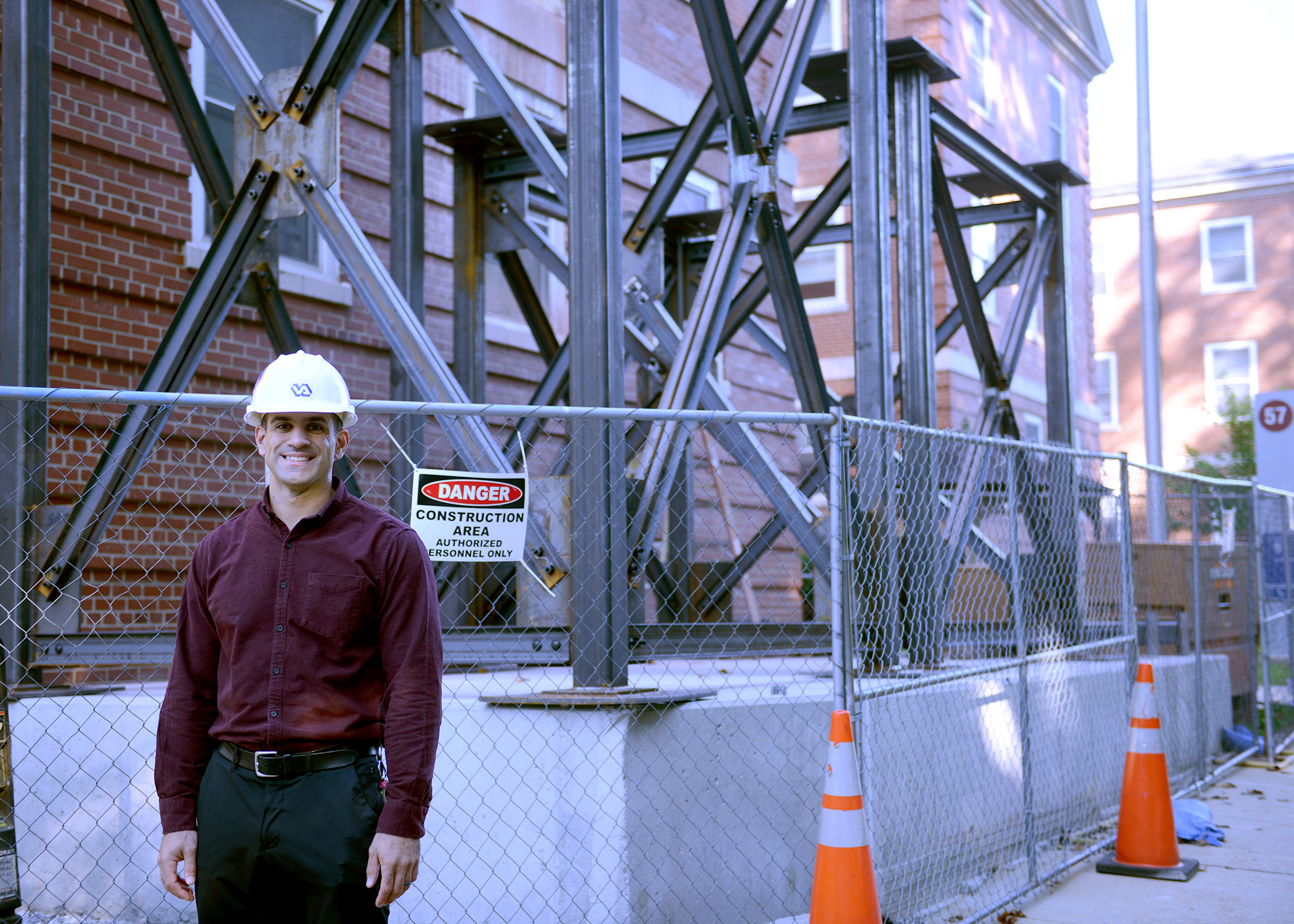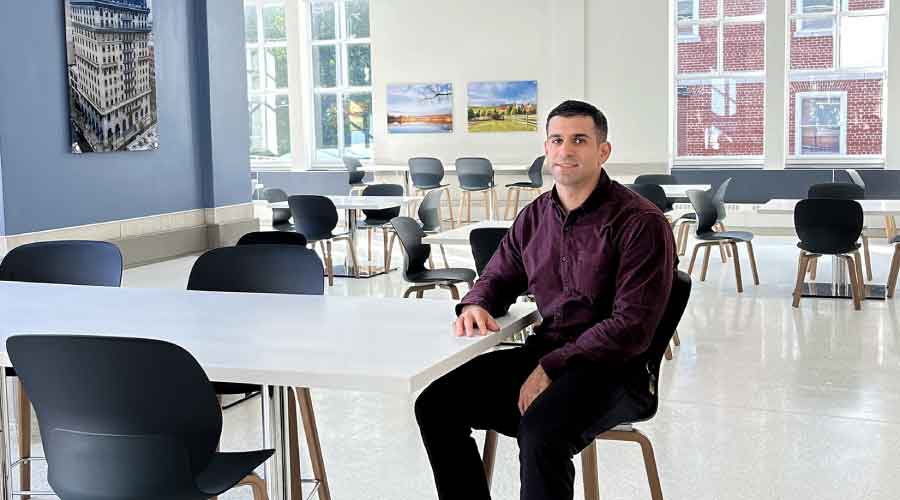Anthony Caruso Leans on Veteran Background as Chief Engineer
High standards and military training helps Anthony Caruso navigate engineering at VA Medical Center.
By Mackenna Moralez, Associate Editor
When Anthony S. Caruso first joined the Coatesville VA Medical Center (VAMC) as the chief engineer, he knew he was going to have to be an advocate. Whether it would be for the healthcare facilities or for the occupants themselves, he would have to provide technical expertise for all those involved. Afterall, this wasn’t new to him – he is a veteran as well.
“I feel strongly connected to the mission at Coatesville VAMC,” says Caruso. “Many of my family members were/are Veterans; I am a Veteran serving Veterans. I try to bring this mentality to my work and my career each day. I always attempt to center myself to the fact that the work we are doing improves Veteran care or Veteran living quarters. I always try to connect these actions for my staff as well.”
Caruso first got his start in the military just as he was out of high school, attending the United States Military Academy. There, he graduated with a civil engineering degree and began serving active duty in the U.S. Army as an engineer officer. Throughout his time, he was an engineering staff officer, department leader, project engineer and an instructor and earned his Project Management Professional certification as well as his professional engineer license in civil construction. Following his tenure in active duty, he served at Joint Base McGuire Dix Lakehurst in the U.S. Army Reserve as a civil engineer. He is now currently in charge of the Facilities Engineering Department at the VAMC.
Coatesville VAMC is primarily a mental health facility with 975,000 SF of space and two outpatient clinics in neighboring counties.

“I’ve been in facilities management for about two years,” says Caruso. “I have experience in many different realms of engineering, ranging from new construction to demolitions in the military, all which present their own challenges. I would say, with regards to facility management in a healthcare environment, each little detail matters, especially in areas such as our inpatient mental health unit. We have many residents at our campus.”
The department that Caruso oversees as three distinct sections: Projects, Maintenance and Operations (M+O), and a Fire Department. He explains that the projects section completes all the capital improvements at the campus; the group has engineers as well as construction control representatives. The M+O section also has shops including all the skilled trades: HVAC, plumbing, electricians, mechanics, grounds personnel, carpenters, masons, boiler plant operators, painters, and also a transportation section. This team also maintains the boilers, emergency generators and a central chiller plant. Meanwhile, the facility is unique as it is one of the few VA hospitals with a full-time fire department, which includes a fire engine, ambulance and support vehicles that respond to calls on the campus and within the community.
“As you can imagine, there is a perpetual stream of work orders and requests for projects incoming to my department,” he says. “In the healthcare environment, it is critical to address facility and stakeholder needs while adhering to our policies and processes. We also have to take into account patient safety and patient comfort in certain areas. This is a difficult task for myself and my leadership. In addition, we have to manage shutdowns and utility outages at a hospital. When building a new building, one of our goals is to ensure no one is disturbed. However, working in the healthcare environment or in an operational counseling building, our construction activities can have a big impact on patient care. If we shut down a road, we will need to attempt to inform all patients visiting campus on that day and have appropriate signage. For me this is different, as there is an equal focus on communication and engineering.”
Background Training
On a daily basis Caruso has to leverage his engineering knowledge with his leadership skills. Despite being a self-proclaimed introvert, he knows that having strong communication skills is a requirement when it comes to being a good leader.
“I take leadership roles and functions very seriously,” he says. “When a concern is brought to me, I make every effort to resolve the issue and I have no qualm with reaching out to other supervisors to resolve any disagreements.”
Still, he has a military mindset and relies on his previous training to complete operations. However, he believes that having high standards in this regard only helps support the healthcare benefits that the veterans receive at VAMC.
Meanwhile, these standards have only helped Caruso avoid pigeon-holing himself in his career. He believes that as chief engineer, he needs to be very limber when it comes to engineering subject areas because no day is the same. One moment you could be discussing the boiler plant, and then next you are having a meeting to discuss the life safety code with the fire marshal. He attempts to stay visible and make connections with leaders outside of his area of expertise, allowing him to create a plan that continues to align with the overall goal of the facility.
“I have learned a ton from my employees in this role; my first piece of advice is to ask as many questions and learn as much as possible from your employees as you can,” says Caruso. “I am a civil engineer, so anything to do with heating or cooling is not my expertise. I overcame this by consulting the experts in my department. Similarly, is my second piece of advice is seek opportunities outside your expertise to learn about. For instance, I sat down with our electrical engineer one day to speak about our emergency generator system. This was an informal class but seeking classes or manuals for furthering your understanding of the totality of everything in your facility is critical. Last, think of the facility as a system rather than the individual components of plumbing, electrical, HVAC. It is all connected, even carpentry and painting.”
While his career in facilities management is only just beginning, Caruso already has a large list of goals he is hoping to accomplish. He hopes to bridge the gap between the healthcare facilities’ capital projects and the maintenance department, creating a team effort to ensure the designs and construction are maintainable.
While he has felt the pressure of strenuous standards, Caruso still wouldn’t change anything that got him to where he is today. He notes that his previous roles in the military and engineering have served him well in his position.
“I think people should look into facilities management for the incredible opportunity to learn and make a big difference for their company,” says Caruso. “Buildings and infrastructure are so important today when it comes to business, healthcare, and military facilities that there is really no limit to what a facility manager can learn. One thing I like about facility management is that, as you move up, it really is half engineering and half leadership.”
Mackenna Moralez is the associate editor for the facilities market.
Related Topics:











